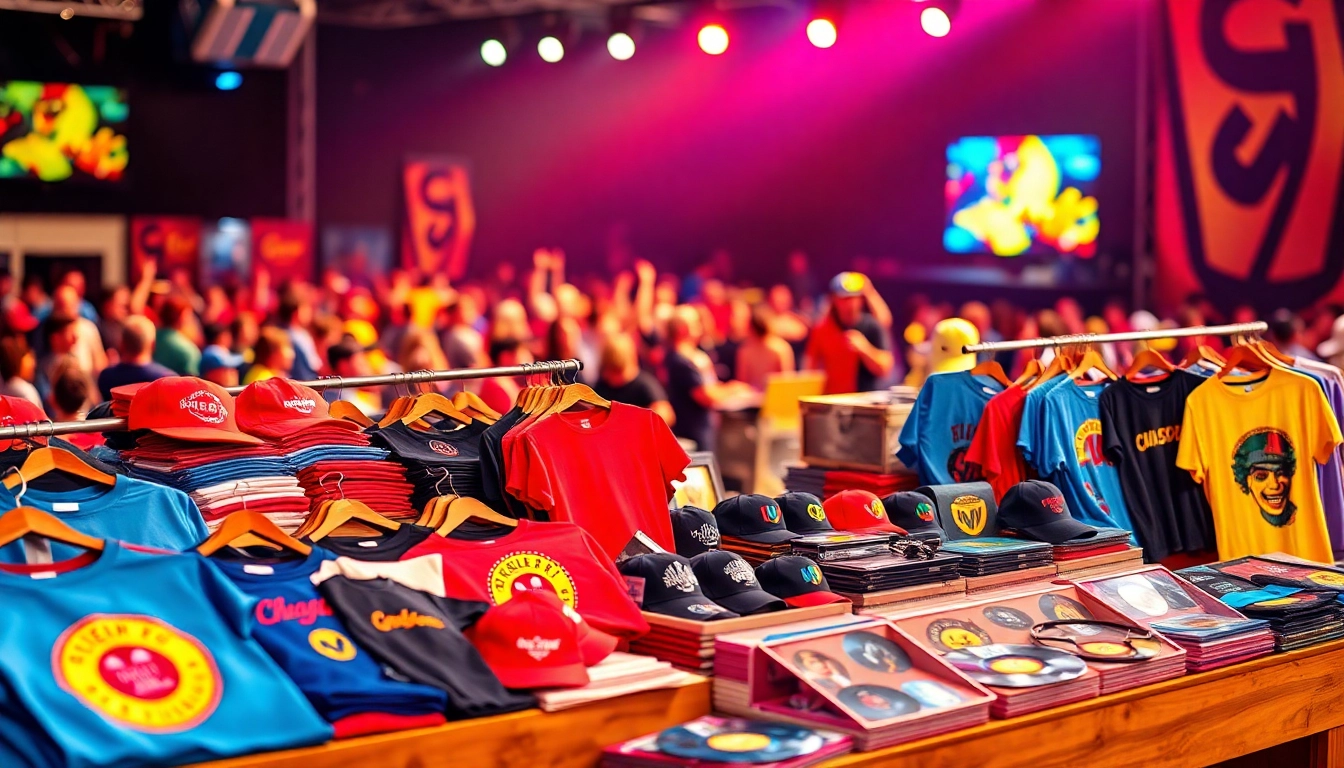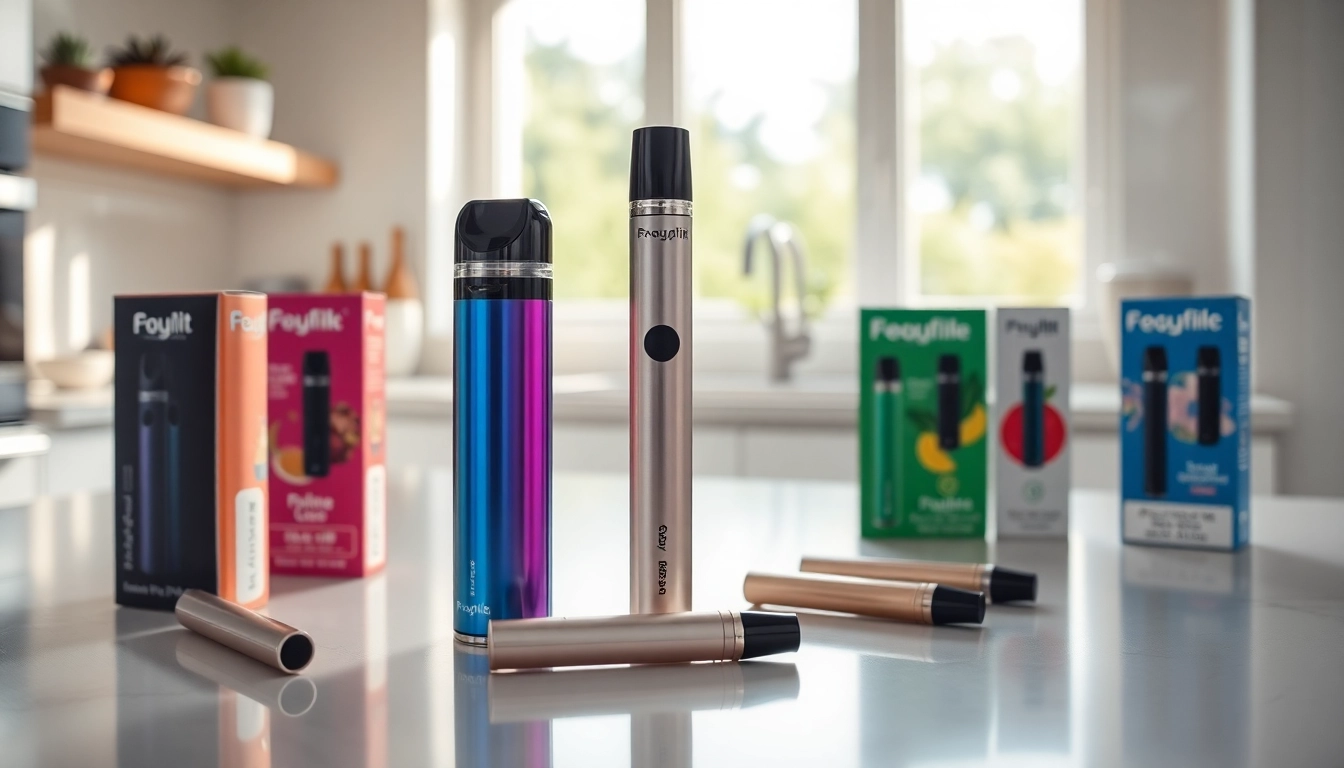Understanding the Importance of Merchandise
In the fast-paced world of music, artists and bands continuously seek new ways to engage their fans and generate revenue. One of the most effective means of achieving these goals is through merchandise. Merchandise not only serves as a source of income but also helps solidify an artist’s brand and foster a deeper connection with fans. Exploring the dynamics of merchandise in the music industry is crucial for any artist looking to expand their reach and create a lasting impact.
What is Merchandise in the Music Industry?
In the music industry, merchandise refers to physical products that bear the branding and imagery associated with a particular artist, band, or album. This can include a wide range of items, from clothing and accessories to exclusive collectibles and digital downloads. Merchandise acts as both a promotional tool and a revenue stream, allowing fans to express their support for an artist while also celebrating their music.
Benefits of Merchandise for Artists
There are several distinct advantages to integrating merchandise into an artist’s overall strategy:
- Revenue Generation: Merchandise can be a significant income source, especially during tours where sales can reach thousands of dollars per concert.
- Fan Engagement: Selling merchandise fosters a sense of community among fans, as they wear and use items that showcase their loyalty to the artist.
- Brand Identity: Effective merchandise helps solidify an artist’s brand, creating memorable visual elements that enhance recognition and loyalty.
- Marketing Tool: Merchandise can act as a marketing tool, as fans wearing items effectively become walking advertisements, promoting the artist to a broader audience.
Consumer Interest in Merchandise
The demand for music merchandise has seen a meteoric rise in recent years, with fans increasingly seeking a tangible connection to their favorite artists. This interest is evident in various demographic segments, especially among younger audiences who value unique and exclusive items that foster a connection to the artist’s music and identity. Additionally, the rise of e-commerce has made it easier for fans to access merchandise, leading to increased sales opportunities for artists.
Types of Merchandise to Consider
Apparel: T-Shirts, Hoodies, and More
One of the most popular types of music merchandise is apparel, which includes T-shirts, hoodies, caps, and other wearables. Apparel not only serves as a revenue stream but also acts as a form of walking advertisement. T-shirts that feature eye-catching graphics or clever slogans can promote an artist’s brand wherever they are worn.
When designing apparel, it’s essential to consider quality, comfort, and style, as these factors will influence customer satisfaction and repeat purchases. Collaborating with experienced apparel designers can help create unique and attractive pieces that fans will love to wear.
Accessories: Hats, Bags, and More
In addition to apparel, accessories like hats, bags, and jewelry can also be lucrative merchandise options. These items allow fans to showcase their devotion to the artist in a more subtle yet fashionable manner. Items such as snapback hats, tote bags, and bracelets can complement existing apparel lines and provide variety for consumers.
Moreover, offering limited-edition accessories can create a sense of urgency among fans, encouraging them to make a purchase before these items sell out.
Exclusive Items: Vinyl and Limited Editions
Exclusive and limited-edition items often resonate strongly with dedicated listeners. For instance, collectible vinyl records and special edition CDs can attract fans who appreciate the nostalgia of physical music formats. Creating bundled packages that might include signed vinyl, artwork, and special notes from the artist can increase the perceived value, encouraging higher prices.
Particularly for niche audiences, offering exclusive merchandise can lead to increased loyalty and distinctive brand positioning within the music industry.
Designing Eye-Catching Merchandise
Color Choices and Brand Alignment
The design of merchandise can significantly impact its appeal and effectiveness. Selecting appropriate color schemes that resonate with an artist’s brand is crucial. Colors evoke various emotions and feelings, making them powerful tools in merchandise design. For instance, vibrant colors may appeal to a youthful audience, while muted tones might resonate with a more mature demographic.
Moreover, consistent color usage across all merchandise items can reinforce an artist’s brand identity and make it more recognizable.
Using Creative Artwork and Branding
Artwork is another essential element of merchandise design. Collaborating with talented graphic designers can help create unique and engaging visuals that encapsulate an artist’s essence. Whether it’s album art, logos, or illustrations, these designs should reflect the themes and messages conveyed in the artist’s music. Limited-run prints of unique artwork can also create exclusivity and drive fan interest.
Effective Use of Typography
Typography plays a crucial role in merchandise design, as the font choice can dramatically affect how messages are perceived. Bold, modern fonts might resonate with a younger audience, while classic, elegant fonts could appeal to an older demographic. Thus, it’s important to carefully select typography that aligns with the overall branding and aesthetics of the music and merchandise.
Incorporating clever phrases or song lyrics into designs can also create an immediate connection with fans, enhancing their likelihood of purchase.
Marketing Your Merchandise Effectively
Online Promotion Strategies
In today’s digital world, online promotion is paramount in marketing merchandise. Social media platforms such as Instagram, Facebook, and TikTok provide artists with an opportunity to showcase their merchandise, launch campaigns, and connect with fans directly. Posting visually appealing images of merchandise being worn by band members or influencers can entice fans to make a purchase.
Additionally, creating engaging content around merchandise launches, such as behind-the-scenes videos, can further enhance consumer interest and drive sales.
Collaborating with Influencers
Collaborating with influencers can amplify awareness and sales of merchandise. Engaging influencers who resonate with an artist’s target audience can authentically promote merchandise to their followers. This partnership not only expands the reach but also builds credibility, as fans often trust the recommendations of influencers they admire.
Creating Merch Bundles and Packages
Offering merchandise bundles or packages can enhance consumer value and increase sales. For instance, bundling a T-shirt with a digital album download or a signed poster can encourage fans to buy more than they initially intended. Promotional campaigns highlighting limited-time offers can also create a sense of urgency that drives consumer engagement and purchases.
Measuring Merchandise Success
Key Performance Indicators for Merchandise Sales
To ensure the effectiveness of merchandise strategies, artists must track various Key Performance Indicators (KPIs). Metrics such as total sales revenue, the number of items sold, and website traffic related to merchandise can provide insights into what is resonating with fans. Understanding the customer acquisition cost and average order value can further clarify the efficiency of marketing efforts.
Feedback from Fans and Consumers
Equally important is gathering feedback from fans regarding their merchandise purchases. Surveys and polls can gauge consumer satisfaction, providing valuable insights into what items fans enjoyed and what they would like to see in the future. Encouraging user-generated content, such as fans sharing photos wearing merchandise on social media, can also reveal preferences and trends.
Adjusting Strategies Based on Sales Data
Finally, analyzing sales data helps artists adjust their merchandise strategies effectively. For instance, if certain items consistently perform well, artists can consider expanding their offerings in that category or style. Conversely, if specific items are not selling, artists may need to reassess the design, pricing, or promotional tactics. This iterative approach ensures that merchandise strategies remain adaptive and responsive to fan preferences.



